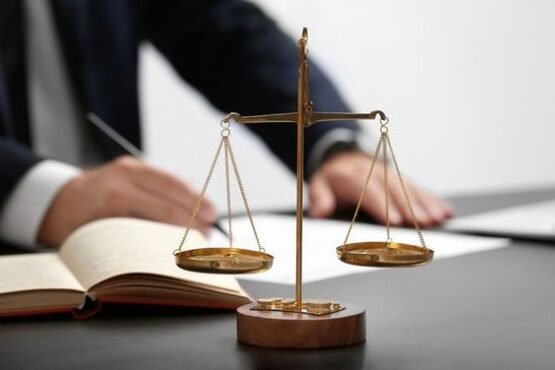“No one is more hated than he who speaks the truth”- Plato: A look at our legal system

1. We have inherited from the British, a wonderful legal system. In doing so, the British was not doing us any charity. They needed a sound legal system for the governance of their own affairs, the common law. The common law is largely founded on Roman law, and Roman law reflects nothing but the thoughts of great philosophers such as Socrates, Plato, Aristotle, Cicero, Ulpian, et al. The doctrine of estoppel and res judicata is one of the cardinal principles on which the Roman law, nay, the common law -our law- is founded. Unfortunately, and unbelievably, the ‘giants’ among our lawyer fraternity seem to be ignorant of the basic principles or have deliberately acted contrary to the basic principles to the point where they have completely destroyed our legal system, nay, the very concept of democracy.Let me take the example of the Mullaperiyar dam.
2. The dam was constructed in the 19th century. It was expected to last for 50 years. Major leaks were observed in the late 1970s. The Kerala Government, based on expert advice, took the definite stand that the dam is not safe, that a new dam ought to be constructed in its place, and the old dam ought to be decommissioned. The Governments, namely, the Governments of the states of Kerala and Tamil Nadu and the Central Government were deeply concerned and were on the verge of reaching a unanimous decision to construct a new dam. While so, in 2000, a PIL came to be filed. With that, the Tamil Nadu Government took an adversarial stand, and the Supreme Court in 2006 held that the dam is safe and that even if it breaks the flood waters would flow in the natural course of the river to the Idukki reservoir, and that the Idukki reservoir would be able to contain the entire flood waters. The Government of Kerala found the judgment to be contrary to reason and an invitation for catastrophe. Taking into account the frightening implications of the breaking of the dam, the Kerala Government brought in a legislation limiting the storage capacity of the dam to 136 ft. The State of Tamil Nadu challenged the constitutionality of the Kerala legislation. Realising that no dam can remain in perpetuity and particularly a dam made of lime and surkhi, at time when dam technology was at its infancy, the Kerala Government made a budgetary provision for the construction of a new dam.
3. In 2014 came the judgment of the 5-judge constitution bench of then Chief Justice R. M. Lodha. The Supreme Court held that in 2006, a 3-judge bench had found that the dam is safe, and therefore, the question as to the safety of the dam cannot be re-agitated, for to do so is barred by the doctrine of res judicata. The Court rejected the plea of the Kerala Government for the construction of a new dam at its own cost on the ground that the Supreme Court had held the dam to be safe in 2006 and, therefore, the issue of safety cannot be re-agitated.
4. A dam is not a static entity. Every fluctuation in the water level creates stress and strain on the dam structure. A dam, like all man-made structures, has a life. It cannot remain safe infinitely. The doctrine of res judicata is a legal fiction. It is founded on the realisation of Roman lawyers of the undeniable truth that no judge can assuredly ascertain the facts correctly, but that for the sake of finality and to avoid the scenario where parties to the same dispute reagitate the issues, even an erroneous decision of a Court ought to be accepted as truth.
5. For the doctrine of res judicata to apply, the Court should have jurisdiction of the subject matter, the parties to litigation must be the same, the cause of action should be the same, the dispute should have been adjudicated on its merits, etc.
6. A dam is not a static entity. With the passage of time the structure deteriorates. The changes in the seismic activity of the area also affects the safety of the dam. The doctrine of res judicata has no application. Even assuming the dam to be safe in 2006, eight years down the line, it could not have been assumed to be safe in 2014. On a gross misconception of the doctrine of res judicata, the Supreme Court held that he dam is safe, because the Court in 2006 had held so and that decision is binding as res judicata. Res judicata is a concept which even a law student ought to know. Unfortunately, the legal giants who rule the roost failed to appreciate the true meaning of the term res judicata and the enormity of their error.
7. Global warming has meant drastic changes in the monsoon pattern. The quantum of rainfall has substantially increased, so too, the density of rainfall at a given time. In 2006, even at the peak of the monsoons, the Idukki reservoir was only half full. Now, every monsoon, the shutters have to be opened. The Mullaperiyar dam is believed by many experts to be far more susceptible than it was in 2006. But the Kerala Government cannot construct a new dam because in 2014, that plea was rejected by the Supreme Court. The only saving grace is that, apparently to overcome the judgment of the Supreme Court, the Central Government has brought in the Dam Safety Act of 2021. But it is doubtful whether the Kerala Government will proceed to construct a new dam in the teeth of the judgment of the Supreme Court of 2014.
8. What made the Supreme Court make such a humongous mistake which may endanger the lives of millions of citizens and the wiping out of the districts of Ernakulam, Alleppey and Kottayam. Many, including the Kerala Government, express the view that the dam is unsafe. Tremors can lead to breaking of the dam. The increase in seismic activity in the area over recent years is, therefore, another cause for concern.
9. No prudent man can remain in the blind faith that the dam will not break. On the contrary, one should prepare to meet any eventuality, namely, that the dam may give away in the coming monsoons. Sadly, nothing is done except the forming of a few committees titled ‘Supervisory Committee, committee under the Disaster Management Act’, etc.
10. Our country has come to be ruled by the judges through PILs, by “enacting laws” under Articles 141 and 142, as opposed to interpreting the law. All these aberrations are the outcomes of another manifest error, the “basic structure theory” which has meant the re-writing of elementary jurisprudence. To put it succinctly, before Kesavananda Bharti, only a person whose rights are infringed could have approached a Court. Today, busy bodies rule the roost, openly declaring that none of their legal -let alone fundamental- rights are infringed, but that the “basic structure” is infringed.
11. Who can correct these errors which have assumed gigantic proportions? There are thousands of judgments “laying down the law of the land” all relying on the basic structure theory. The judges, too, have profited immensely by the so-called basic structure theory. Using that alone, they invented the collegium system where judges appoint themselves (mostly their own kith and kin) and struck down the NJAC.


